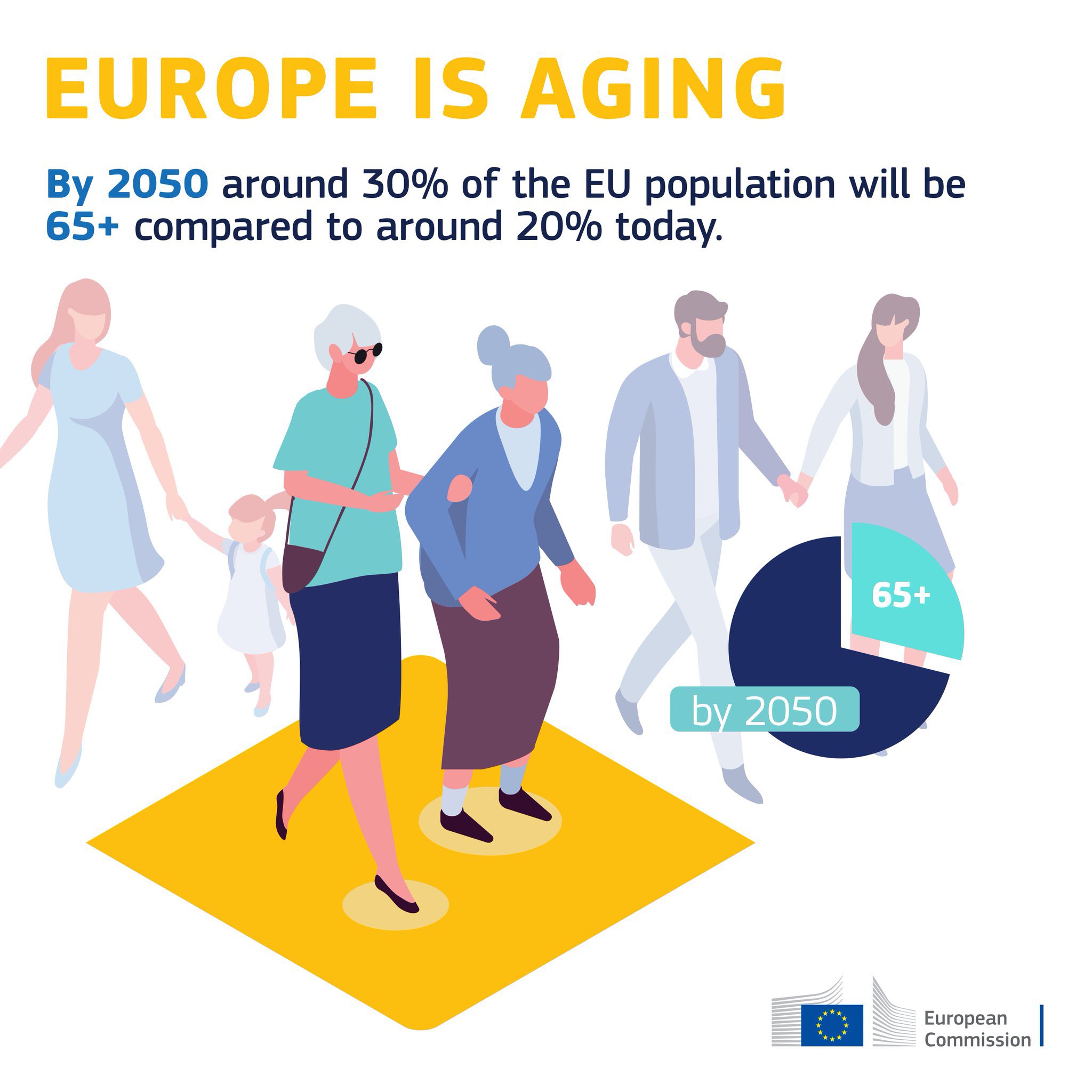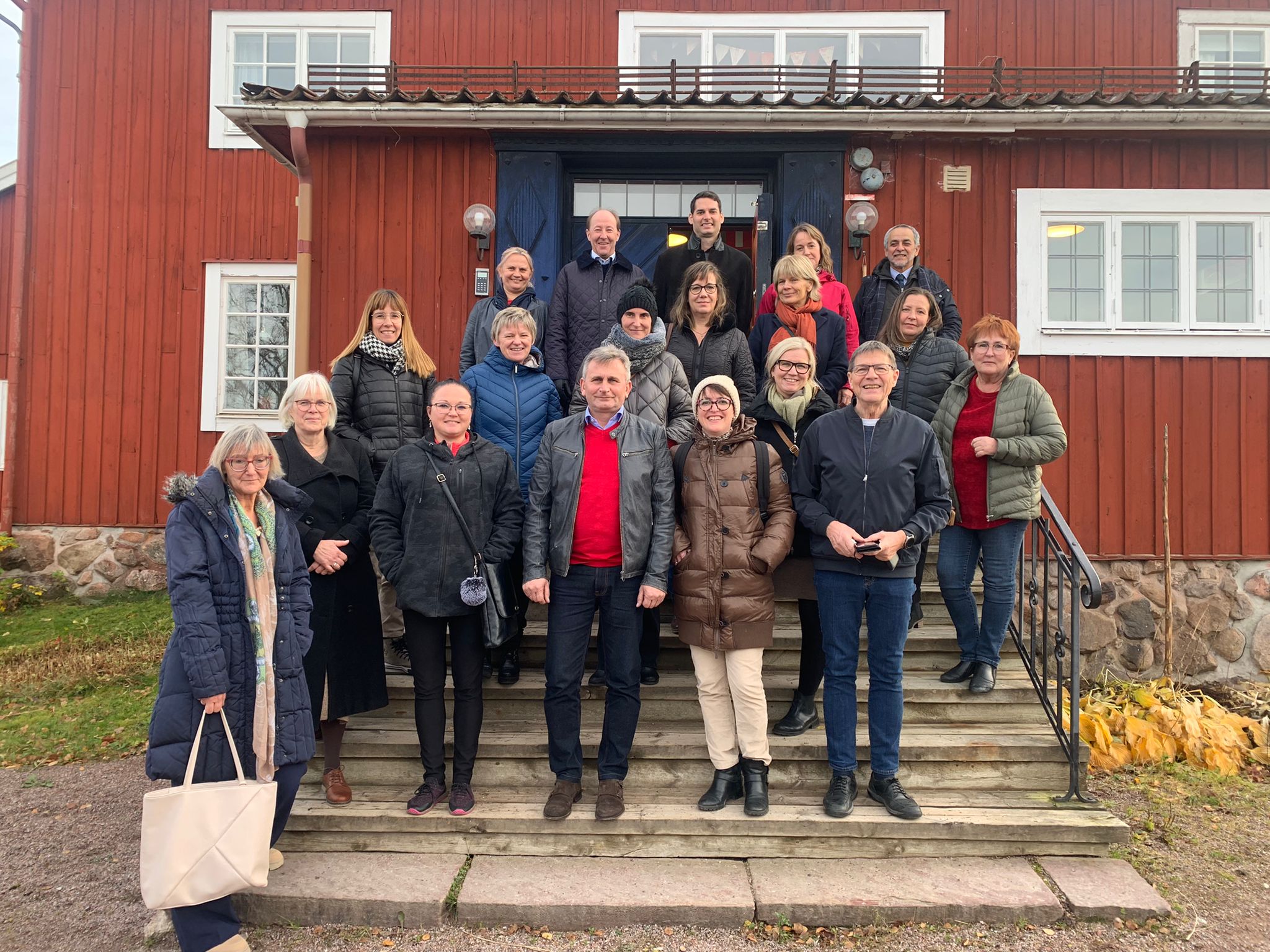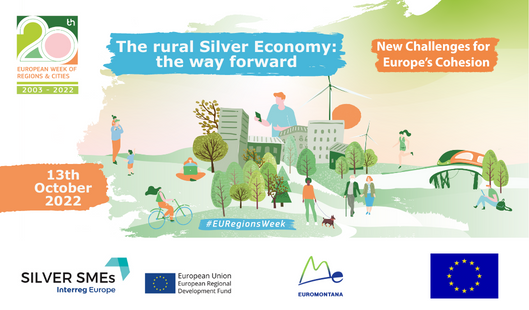Smart Villages seek solutions rooted in the local territory that can generate value and benefits for the community, including for the ageing population. So, how can the concept apply to the Silver Economy sector in rural areas?
Innovation is key to the rural Silver Economy
Smart Villages can support the development of the Silver Economy and contribute to improve the quality of life of rural older adults. The Smart Villages approach is a placed-based methodology relying on innovation to overcome local challenges. During the last 4 years of the SILVER SMEs project, various study visits and good practices demonstrated how digital and social innovation are assets for the Silver Economy sector, especially in rural areas.
Smarter Homes, a show flat in the Dalarna region (Sweden), for instance illustrates how new technologies can help older adults to stay at home and be independent in rural areas. The community nurses model developed by CoNSENSo in the Alps also shows that social innovation is an asset for home care in the mountains.
Smart Silver Villages in Slovenia
The last edition of “Rural Connections”, the European Network for Rural Development’s magazine, highlights how the Smart Villages concept can support ageing rural territories.
Slovenian rural mountainous areas are facing with ageing and a lack of targeted services for older generations. In order to find solutions that are adapted to local contexts, 5 Local Action Groups gathered in the Smart Villages for Tomorrow project. They aim to find new solutions towards Smart Silver Villages, by addressing challenges such as adapting mobility offers, improving digital skills among older adults, creating suitable socialising spaces, and including the ageing population in the social life of villages.
Within the framework of the project, a study explored different smart living systems for older adults with long-term care needs. Different smart housing solutions were identified for residences for older adults, which include health and social services, digital technologies, and so-called “green innovations” (free transport for older adults and locally produced energy and food, based on the surrounding assets of mountain areas).
The European Union Cohesion Policy can play a central role in funding such initiatives, especially through the European Regional Development Fund and the European Social Fund. The Smart Villages methodology also encourages a multi-fund approach, using for instance local and national funds as well as the European Agricultural Fund for Rural Development.
Smart Villages can be a key concept to provide solutions adapted to local contexts by including different stakeholders, like SMEs and the health sector but also researchers and policymakers, taking into account the needs of older adults and combining different funding sources to develop innovative approaches. It can boost the competitiveness of local SMEs by engaging them in a new line of business.











